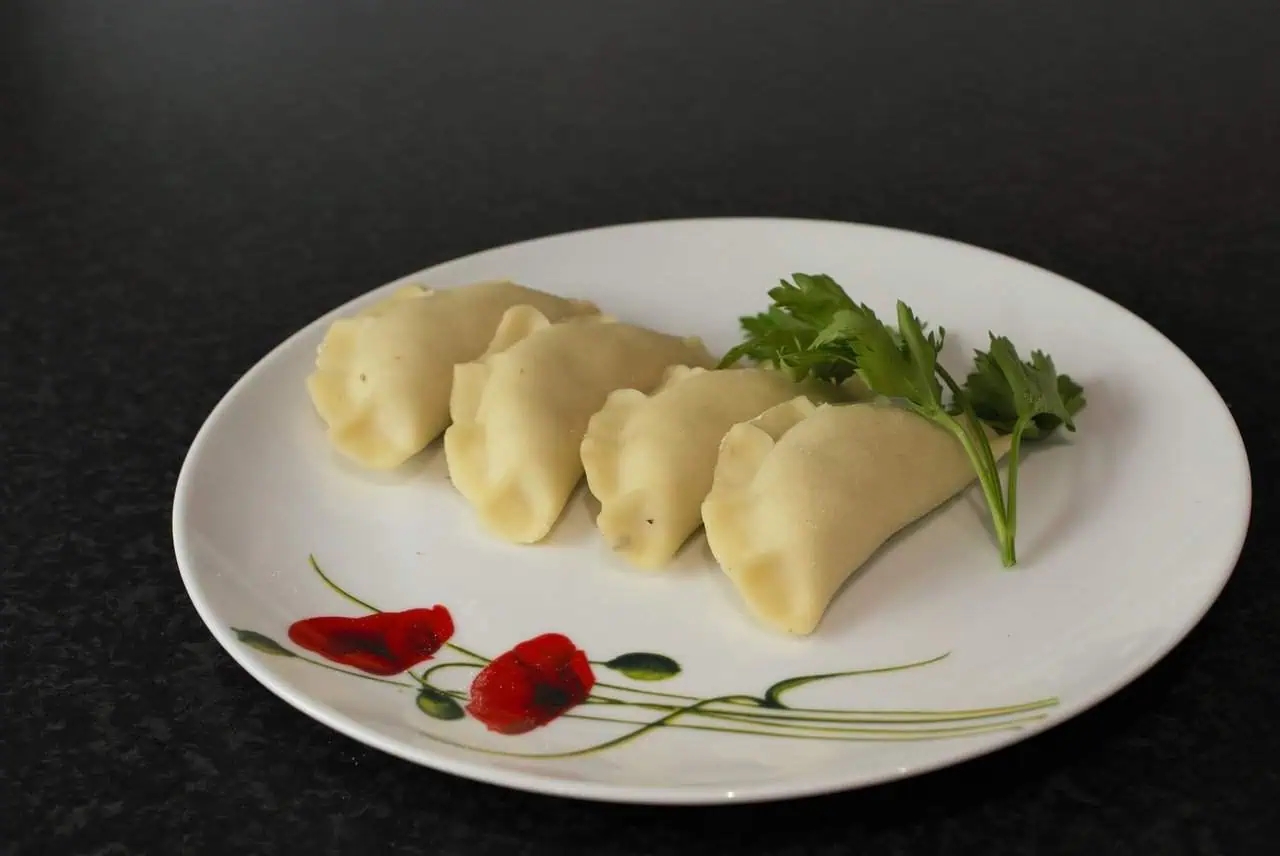My grandmother, Babcia Marysia, makes the best pierogi in the world. I’ve been eating them since I was little. What’s the secret to her pierogi ruskie recipe? The most important thing is to make them with love. Adding lots of butter makes them juicy and springy.
If you don’t know where to get farmer’s cheese, check out my homemade farmer’s cheese recipe (it’s easy to make!). Here’s a video recipe for pierogi ruskie.
Why Are Pierogi Ruskie So Popular in Poland?
The answer is simple: they are one of the cheapest Polish foods to make. In the Middle Ages, meat was expensive and only the rich could afford it. The traditional Polish diet was based on flour, dairy, veggies, and potatoes, which are what pierogi ruskie are made of.
Making pierogi takes time, at least a few hours. It’s worth it, though.
What Can Go Wrong?
Here are common mistakes when making pierogi:
1. Putting them in cold water. Pierogi should be cooked in boiling water.
2. Putting them too close together after cooking can make them stick.
3. Overboiling and overcrowding can cause them to fall apart.
4. Keeping uncooked pierogi for too long can make them dry.
How to Freeze Pierogi Ruskie?
Freezing cooked pierogi: Lay them separately until they cool, then grease with melted butter and freeze.
Freezing uncooked pierogi: Dust with flour, freeze on a tray, then transfer to a food container.
How to Serve Pierogi Ruskie?
You can have them fresh or fried. To fry, melt butter in a pan and cook until brown on each side.
Why Are They Called “Ruskie”?
The name comes from Red Ruthenia, not Russia. In Ukraine, they are called pierogi polskie. Today, some call them pierogi ukraińskie or pierogi galicyjskie to show solidarity with Ukraine during times of war.


